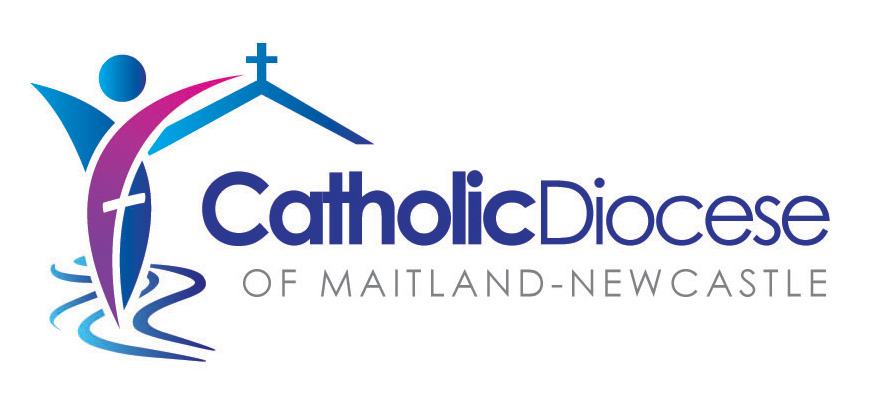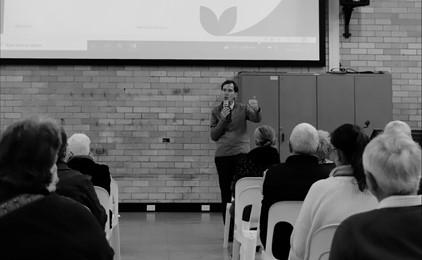Parish List
- Home
- About
- Church & Mission
- Support Us
- Catholic Life
- National Plenary Council & Diocesan Synod
- Youth
- Children's Ministries
- Mission and Outreach
- Diocesan Protection and Safety Council
- Change Loss and Grief
- Ecumenism
- Social Justice
- Other Groups
- Health and Aged Care
- Perpetual Day of Remembrance
- LGBTIQ Forum
- Visiting Clergy - Citizens/Residents of Australia
- Visiting Clergy - International Visiting Australia
- Agencies
- News & Events
- News
- Press Releases
- Bulletin Notices
- Aurora
- DioUpdate eNewsletter
- Royal and Special Commissions
- Tuesdays With Teresa
- What's on in the Diocese
- World Youth Day 2023 Lisbon
- Second Assembly of the Fifth Plenary Council of Australia
- Church Without Walls
- NAIDOC WEEK 2023
- Social Justice Statement 2023-24
- Easter Mass Times 2024
- People
- Places
- Mass Times App
Press Release
Detailed communication in support of Bishop Bill Wright’s open letter to the People of the Diocese

DETAILED COMMUNICATION IN SUPPORT OF BISHOP BILL WRIGHT’S OPEN LETTER TO THE PEOPLE OF THE DIOCESE IN PREPARATION FOR THE AIRING OF THE ABC DOCUMENTARY REVELATION
The details set out below are written in reference to an open letter written by Bishop Bill Wright to the People of the Diocese in preparation for the airing of the ABC documentary ‘Revelation’. This communication provides greater detail in relation to issues of note that were canvassed with Bishop Wright by Sarah Ferguson, presenter of the documentary.
VINCENT GERARD RYAN
Vincent Gerard Ryan was a prolific paedophile who was the first priest convicted in this diocese for his horrific crimes against children. A brief chronology of Ryan’s appointments and charges are as follows:
|
1966 |
Ordained a priest in the Vatican |
|
1970 |
Returns to the Diocese. Temporary appointment to Singleton (Assistant Priest) |
|
Dec. 1970 |
Appointment to Maitland (Assistant Priest) |
|
Aug. 1973 |
Appointed to The Junction/Merewether (Assistant Priest) |
|
Dec. 1975 |
Withdrawn from ministry. |
|
Jan. 1976 |
Left for Melbourne |
|
Dec. 1976 |
Returned to Diocese Appointed to Newcastle (Assistant Priest) Appointed to the Marriage Tribunal |
|
Aug. 1978 |
Appointed to Hamilton (Assistant Priest) |
|
Jan. 1984 |
Appointed to Gresford (Parish Priest) |
|
April 1988 |
Appointed to Cessnock (Parish Priest) |
|
Jan. 1995 |
Appointed to Taree (Parish Priest) |
|
Oct. 1995 |
Arrested at Taree by NSW Police for alleged child sexual assault Faculties to minister as a priest removed |
|
May 1996 |
Pleaded guilty to 11 charges in relation to two victims. |
|
June 1997 |
Pleads guilty to a total of 53 charges involving 23 victims |
|
Sept. 1997 |
Sentenced to a total of 16 years imprisonment |
|
Aug 2010 |
Released on parole |
|
May 2014 |
Completed parole |
|
2015 |
Seven new charges, relating to a previously unknown victim from the 1980’s, were laid |
|
April 2016 |
Pleaded guilty to three charges, others dropped |
|
Oct. 2016 |
Sentenced to 15 months imprisonment, wholly suspended |
|
April 2017 |
New charges relating to three previously unknown victims from the 1970’s and 1990’s, were laid |
|
Feb. 2018 |
Six charges relating to two of the three victims proceeded to trial |
|
March 2019 |
Found guilty of four charges against two victims |
|
May 2019 |
Sentenced to three years, three months imprisonment |
- In 2010 Emeritus Bishop Michael Malone determined that it would be better if Ryan remained a priest, on the condition he observed the terms of a memorandum of understanding (MOU).
- Bishop Malone spoke about this decision publicly, including an interview with Joanne McCarthy which was reported in the Newcastle Herald in 2010, a transcript of that article is available here.
- The Diocese had understood that Ryan had made a full disclosure of his victims to NSW Police in 1996.
- Ryan’s abuse and the Diocese’s response to his criminality, then and now, have been forensically examined by the Royal Commission into Institutional Response to Child Sexual Abuse (‘Royal Commission’), Case Study #43.
- The Royal Commission’s report into Case Study #43 remains unpublished.
- Ryan’s subsequent convictions in 2016 and 2019 for previously unknown victims have resulted in Bishop Wright informing the Congregation for the Doctrine of the Faith (CDF).
- The CDF will make its recommendation to Pope Francis as to whether Ryan should be laicised.
SACRAMENT OF CONFESSION
Bishop Wright’s position is clear, he will preserve the integrity of the sacrament of confession.
Bishop Wright believes that:
- the protection of children from abuse and the integrity of the sacrament are both incredibly important
- it is not a binary choice between ‘protecting children’ and ‘preserving the sanctity of confessions’
- as an adult and citizen, he and all diocesan personnel, will report any reasonable suspicion of child sexual abuse to the authorities, regardless of whether the person is a priest, friend or relative
- he is a tangible point of access for the sinner to the grace and mercy of God whilst being the confessor in the sacrament.
During one section of the interview there were some 28 exchanges between Ms Ferguson and Bishop Wright during which Ms Ferguson repeatedly promoted the proposition that supporting the seal of confession relegates child protection to a secondary consideration. In the course of that exchange Bishop Wright made a detailed reiteration of his position. The first six words of that response has been featured in the ABC’s promotional material. The complete exchange was as follows (the quoted section is in bold italic):
Ferguson: And when those two things come into conflict, you choose confession over the children.
Wright: I think we will do that. Yes. Now, it’s not over the children, it’s over – it’s over really undermining and pretty much doing away with the sacrament of confession for anyone who wants to say anything very much more serious than, I thought unkindly of my neighbour, you know? It’s – either it is a forum where you can go and open your life before your God, or it’s not, and I think it’s worth preserving.
In over 40 years in ministry Bishop Wright has never heard such a confession. Nevertheless, Bishop Wright accepts that:
- many people outside the church cannot understand and will not accept his position
- there may be laws soon past that require him to break the ‘seal’ of confession
- nobody is above the law and no one should ever be.
Vincent Gerard Ryan and the Confessional
In interview Ms Ferguson put it to Bishop Wright that Ryan, during confession, confessed his paedophilia, was absolved and given a minor penance and then went on to abuse more children. Ms Ferguson described it as “almost the perfect example of this question”.
However, it was not the confessional secrecy that prevented Ryan from being reported. As early as 1974 Ryan admitted to abusing at least one child. These admissions were made outside the confessional and were made to Monsignor Patrick Cotter, who was one of the most senior clergy in the Diocese at that time. Today, this knowledge would be immediately reported to the police and/ or other proper state authorities.
BISHOP LEO CLARKE’S LEGACY
Bishop Wright and the Diocese of Maitland-Newcastle have repeatedly acknowledged the failures of leadership, notably Monsignor Patrick Cotter’s and Bishop Leo Clarke’s roles in failing to protect children and concealing abuse. This has included:
- a public apology and admissions of past failures in leadership as part of the Cunneen Special Commission of Inquiry in 2013
- evidence under oath, including a statement of apology and admission of past failures in leadership as part of the Royal Commission in 2014
- an audio-visual display highlighting Messrs Cotter and Clarke’s culpability in front of 400-500 people in 2017 as part of The Atonement: Lina’s Project
- projection of Lina’s Project onto the walls of the Sacred Heart Cathedral for the following five nights
- presentation of Lina’s Project in three diocesan parishes during 2017-19
- ensuring that there are no buildings, awards or other honorifics bearing Clarke’s name in the Diocese.
However, in interview Ms Ferguson raised concerns about the appropriateness of memorial plaques to Clarke in St John’s Chapel Maitland. The Chapel is where the bishops’ remains are interred and there are a series of uniform plaques to the interred bishops. On inspection, one of Clarke’s plaques was a simple ‘burial plaque’, a statement of when Bishop Clarke was born, ordained, retired and died. The second plaque was bibliographical in nature and detailed the positive aspects of Bishop Clarke’s ministry.
In the past few years the Diocese has addressed a similar question, in relation to a memorial plaque on the gravestone of convicted paedophile Jim Fletcher and while it took some time, the resolution appears to have been accepted by the relevant parties. Bishop Wright put the issue to the Diocesan Protection and Safety Council and accepted their advice. Bishop Clarke’s ‘bibliographic plaque’ was removed and will not be replaced. Unlike the other bishops interred under St John’s Chapel who have both a burial plaque and a bibliographical plaque, Bishop Clarke will only have a burial plaque on display.
INADEQUATE PASTORAL CARE FOR THE NASH FAMILY
Aged just 13, Andrew Nash was a student of Marist Brothers Hamilton who died in his bedroom in October 1974. At the time the coroner returned an open verdict. However, during Case Study #43 of the Royal Commission Br. Peter Carroll, leader of the Marist Brothers Province of Australia, conceded on oath that it was most likely that Andrew had been sexually abused by convicted abuser Francis Cable (‘Br. Romuald’) and that Andrew had committed suicide.
Andrew’s mother, Audrey Nash has described that, after an initial flurry of contact by diocesan clergy, there was no proper pastoral care afforded her or the family from their parish.
Ms Ferguson pursued the proposition that the failure of pastoral care had a conspiratorial base, that clergy covertly ‘knew’ that Andrew committed suicide as a consequence of abuse.
The Diocese has no evidence of conspiracy. Indeed, as the interview progressed, Ms Ferguson conceded that “the evidence was not there, otherwise no question the police would have charged”.
The failure in pastoral care was a result of a priest’s sense of inadequacy in the face of the family’s grief and the lack of any of the answers they needed. This sort of professional inadequacy was captured in the findings of the Royal Commission’s final report which highlighted the importance of providing clergy with ongoing support and development.
The Nash’s experience and the Royal Commission have prompted the Diocese to develop a comprehensive parish leadership framework that includes:
- the careful screening and selection of candidates for ministry
- a continuous professional development process
- professional supervision, coaching and counselling
- an appraisal cycle including ‘360 degree’ performance reviews.
During 2020 the framework is being implemented with the clergy of St Benedict’s Inner Newcastle parish as part of a staged roll out. Members of the Diocesan Leadership Group who are the most senior lay leadership of the diocesan curia, are also participating in the initial roll out.
REV. WILLIAM BURSTON
Rev. William Burston:
- is a retired diocesan priest who has had an impressive ministry
- has made a significant contribution to multiple parishes, diocesan welfare services and many schools
- remains a respected priest for many, having supported multiple families who experienced difficulties in their lives
- has become the focus of public criticism in the past six years
- was found to have been “an unimpressive witness in certain respects” by Margaret Cunneen SC in the 2013-14 Special Commission of Inquiry.
Prior to Bishop Wright’s interview, Ms Ferguson approached Rev. Burston who gave his own views on particular issues. Ms Ferguson alleged that Rev. Burston said that he believes that Andrew Nash had not been abused by Br Romuald, nor did he commit suicide and that Ryan’s conviction in 2019 was unjust.
The Diocese of Maitland-Newcastle accepts that:
- Andrew Nash was abused by the criminal William Cable ‘Br. Romuald’
- Andrew Nash tragically committed suicide in October 1974
- Ryan was properly convicted in 2019 for historic child sexual assaults
Further, the Diocese has complete confidence in Australia’s criminal justice system, its administration and its proper checks and balances. Equally, the statutory authorities that exercise oversight of child protection and reportable conduct systems within NSW operate with professionalism and endeavour to ensure that natural justice is afforded all parties.




